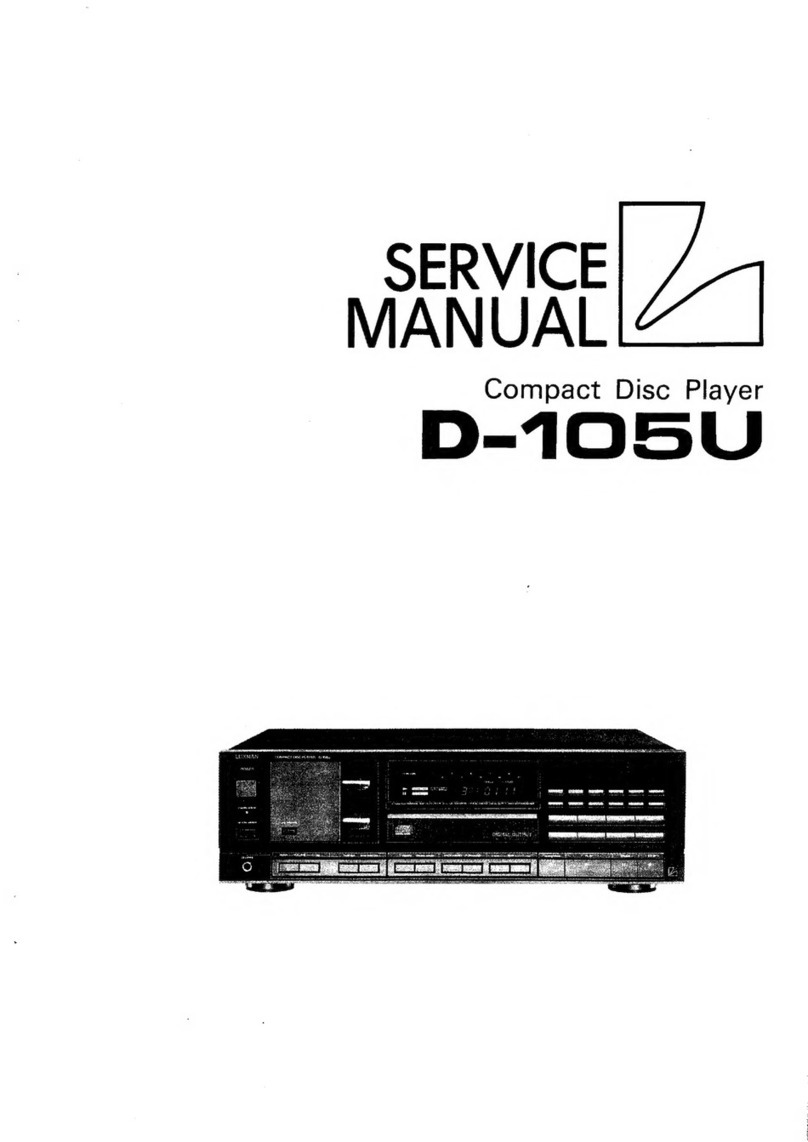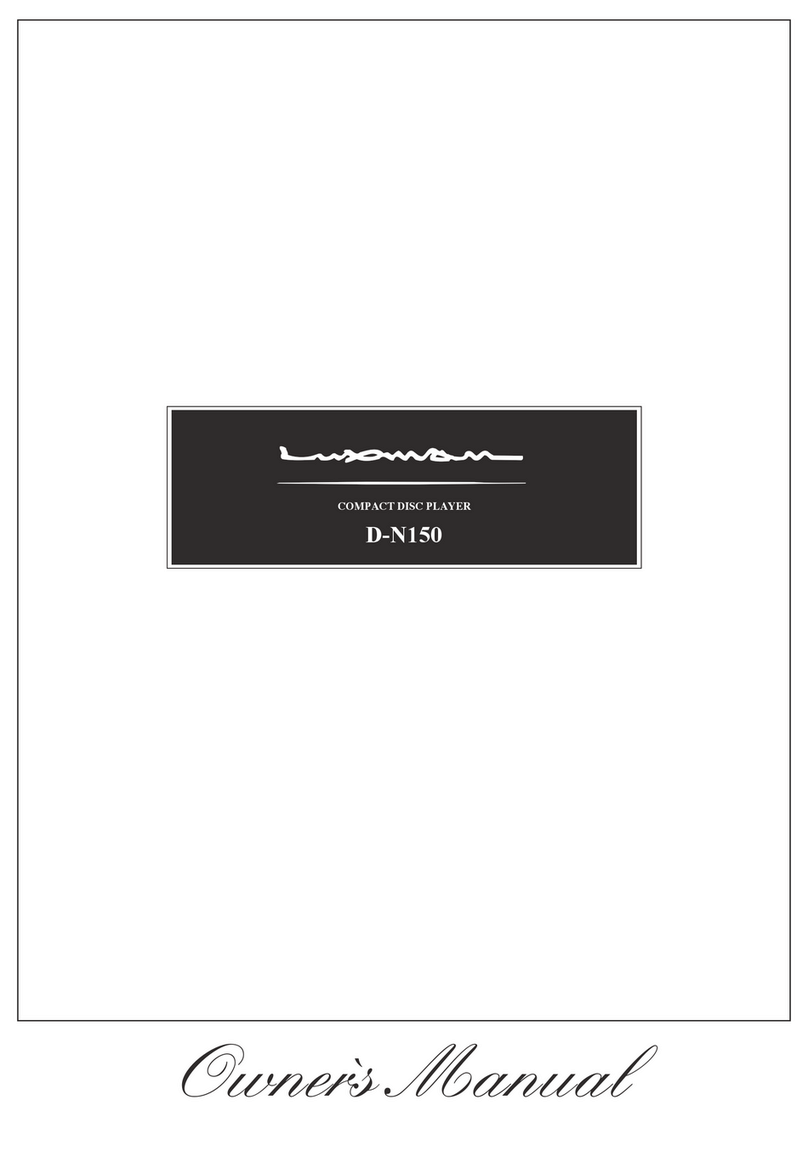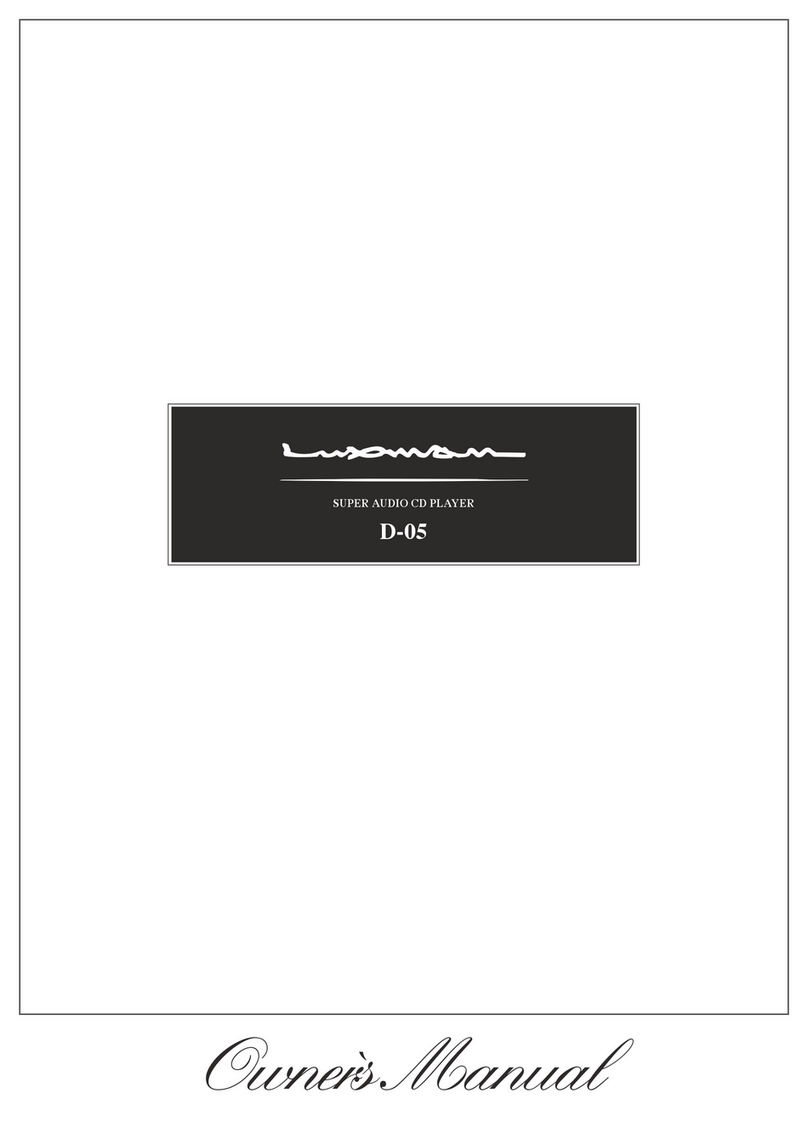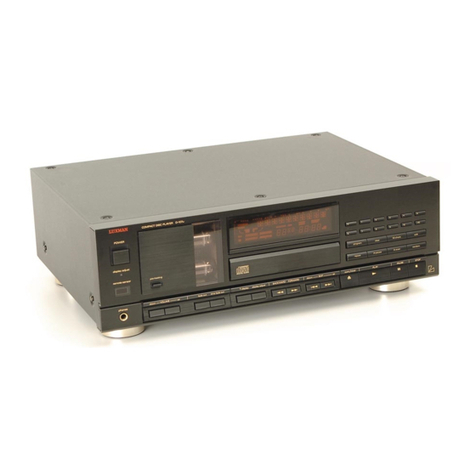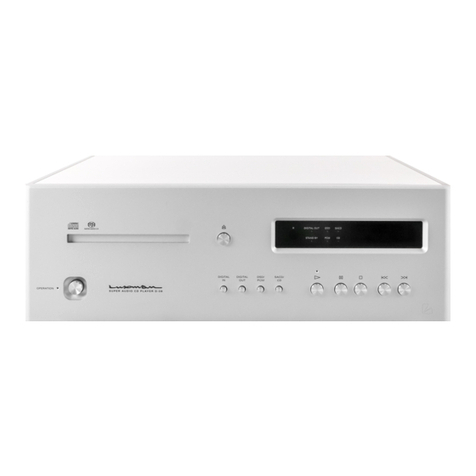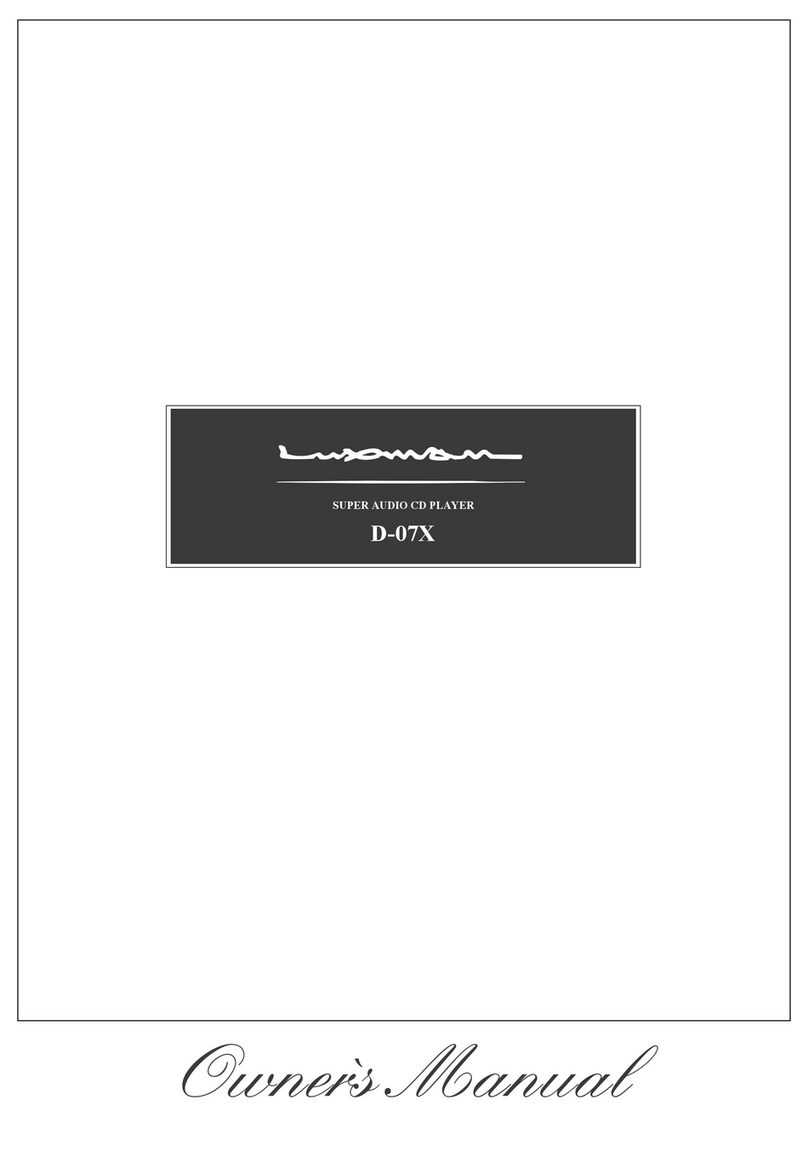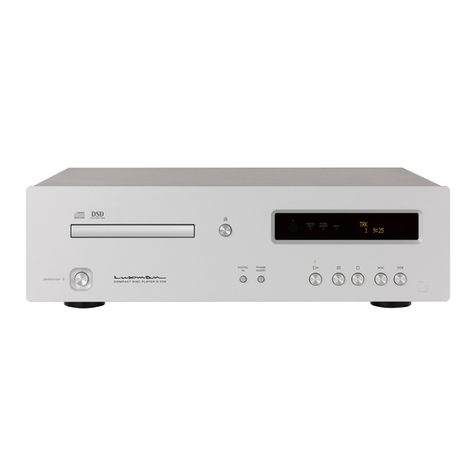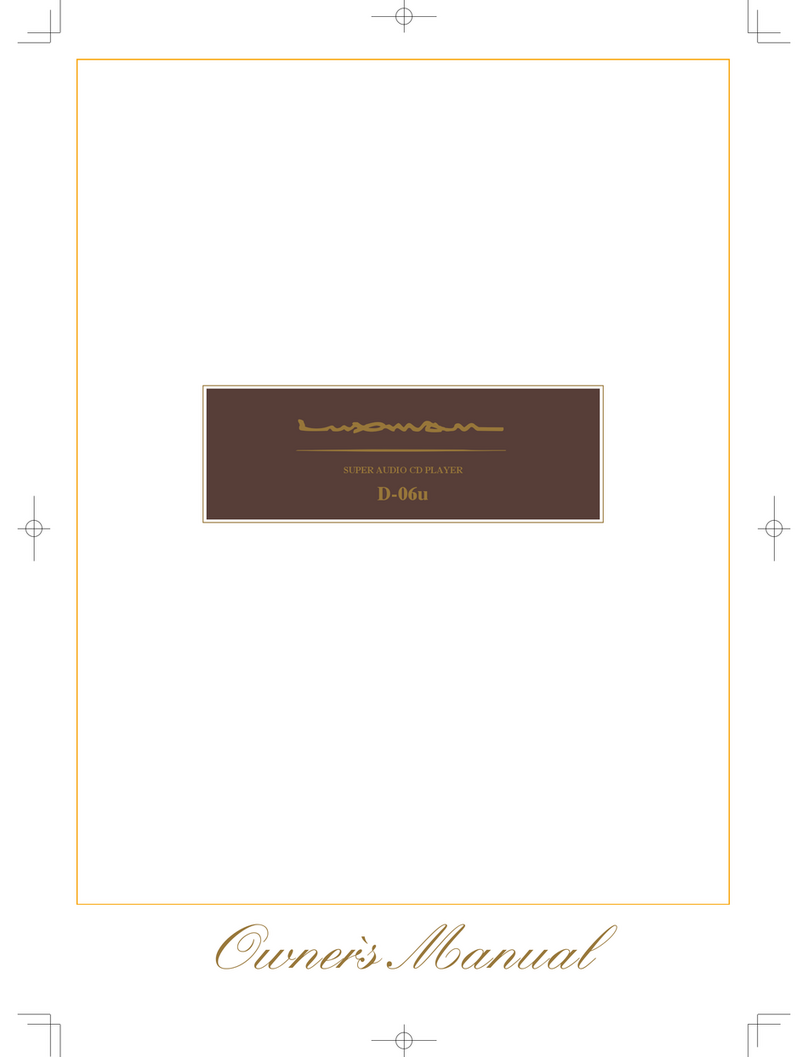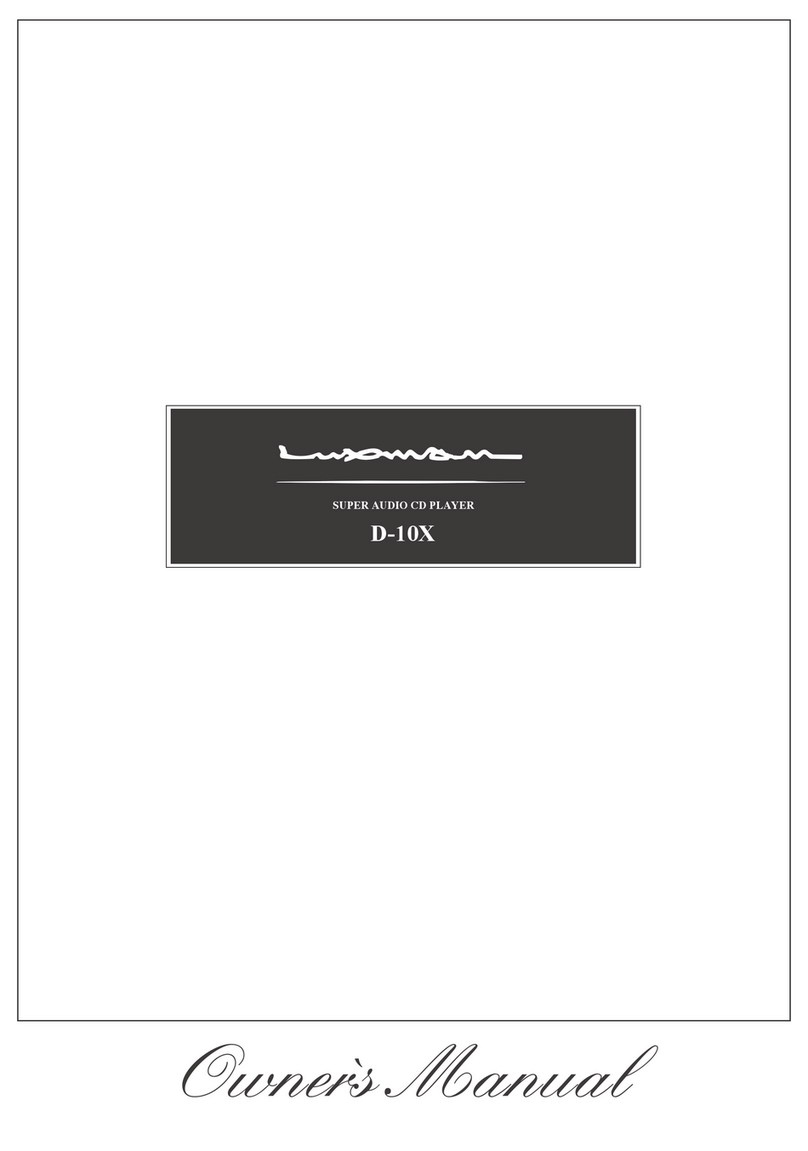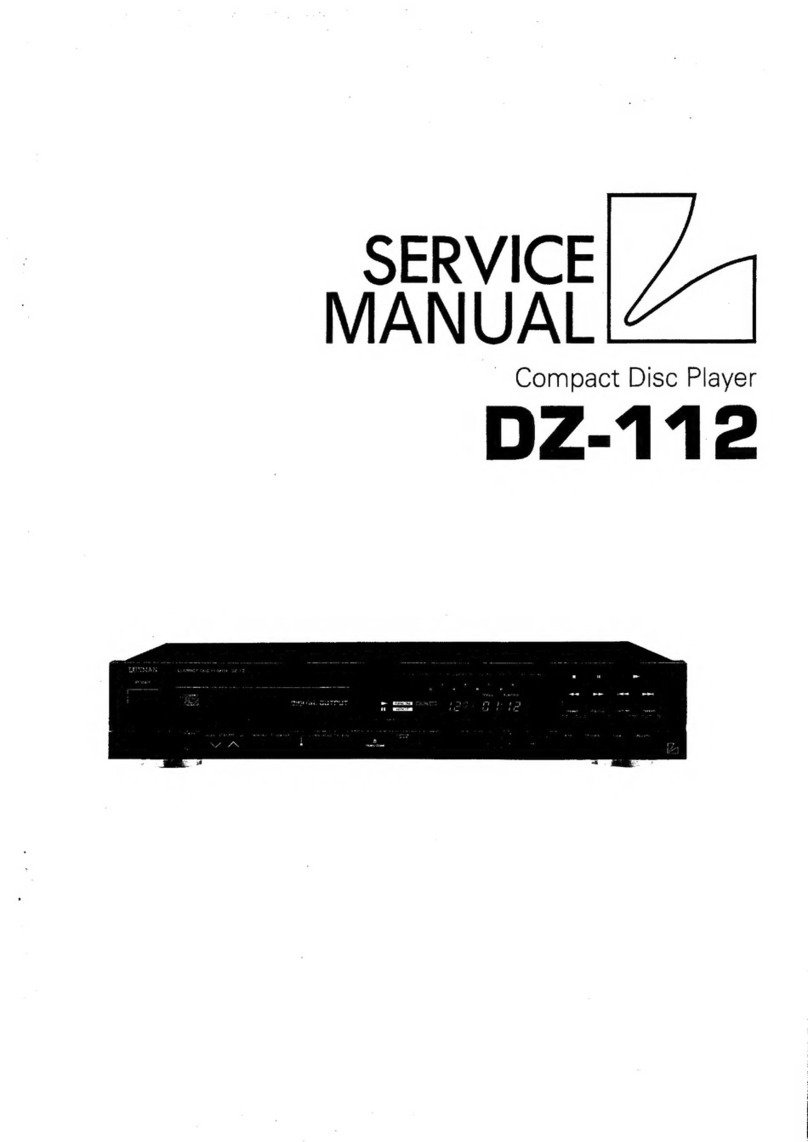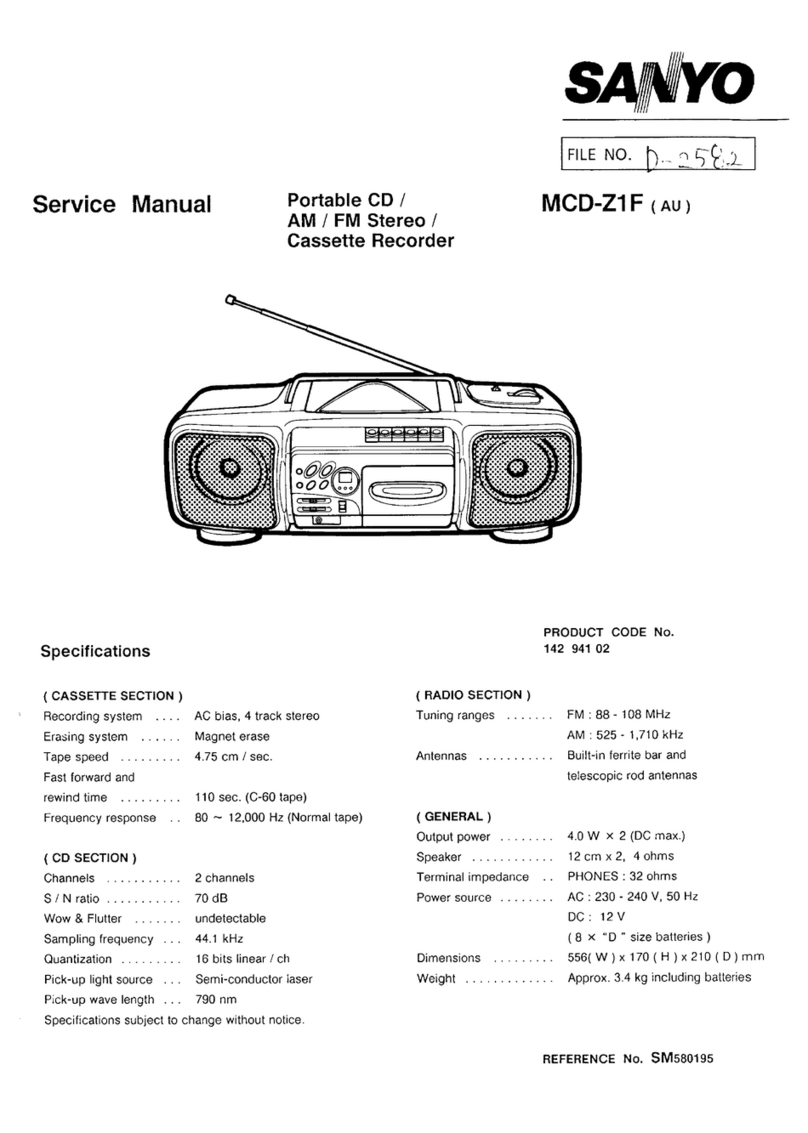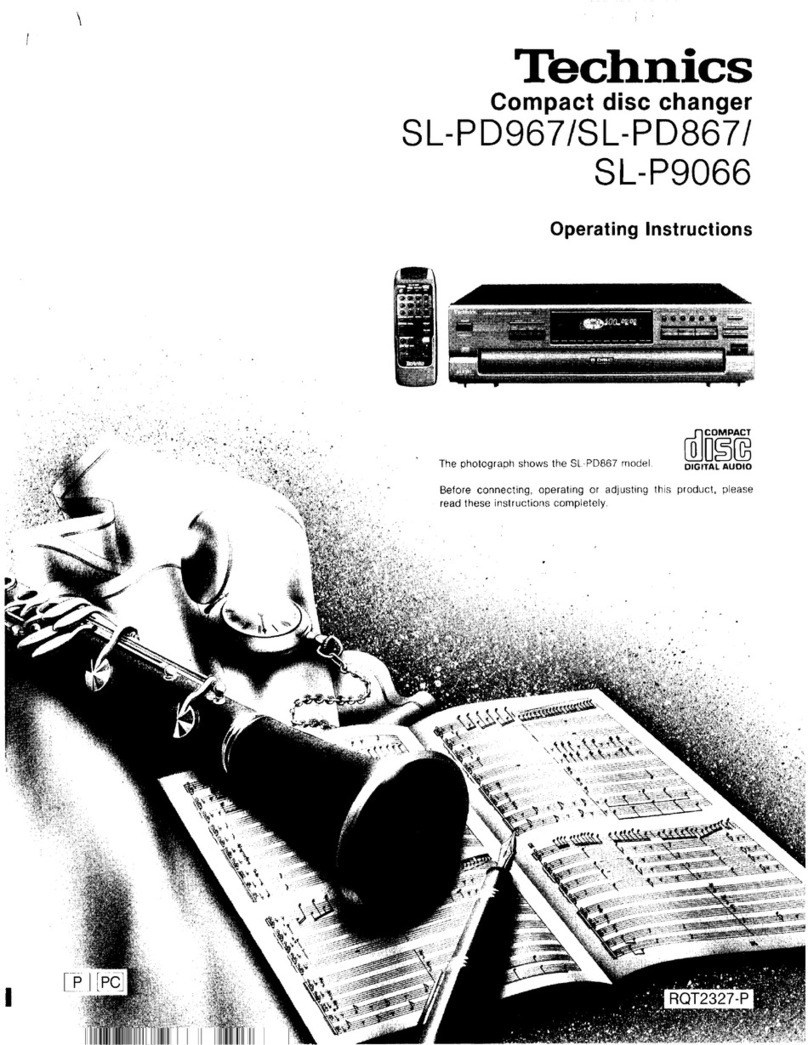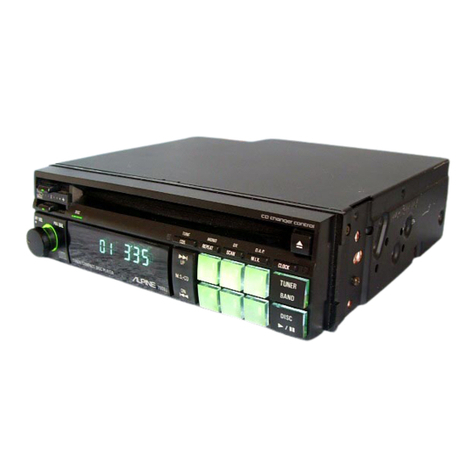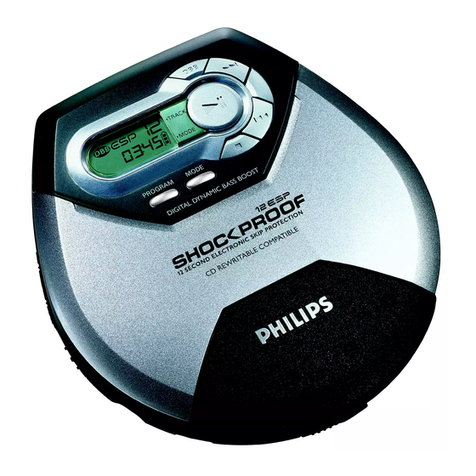1
Precautions
DO NOT move this unit during playback.
During playback, the disc is rotating at high speed. Do not
try to lift or move this unit as the disc may be damaged.
Otherwise, the disc may be damaged.
When moving this unit
You must remove the disc and close the disc tray when
moving this unit. Then, press the OPERATION switch, and
after turning off the power, unplug the power cord from the
AC outlet. If the unit is moved with a disc remaining inside,
this can cause a malfunction.
Installation place
Install this unit in a location where good ventilation and heat
radiation are assured.
Especially, the installation of this unit where the direct sun-
light is present, where the temperature rises excessively
high such as close to a heater, or where it is humid or dusty
may cause a malfunction even if heat is efficiently released.
Therefore, do not install this unit in such places.
Note:
For heat dispersal, do not install this equipment in a con-
fined space such as a book case or similar unit.
* Note
Wall
*
* *
• Install the unit in a stable place such as in the audio rack.
• Do not install this unit near a television or color monitor.
Keep this unit away from such devices as cassette decks
that are subject to magnetism.
• Install this unit onto a level place when possible.
Avoid the following locations for
installation.
• Locations exposed to direct sunlight
• Places subject to humidity and with less ventilation
• Places where are extremely hot or cold
• Places subject to vibration
• Places subject to dust
• Places subject to oil, steam, and heat (such as kitchens)
Do not put articles.
Do not put articles on this unit.
To avoid heat emission
Do not place this unit on such device as an amplifier that
may emit heat. If the unit is installed on a rack, install the unit
below the rack where the amplifier is installed so as to avoid
heat emission from the amplifier and other audio devices.
When this unit is installed in a rack with
glass doors
While the glass doors are closed, do not open the disc tray
by pressing the open/close ( ) button of the remote con-
trol. Disc tray performance will be blocked, and that may
result in a malfunction.
Dew condensation
In winter, be careful when carrying this unit from a cold
place to a warm place or if the room temperature is sud-
denly raised by a heater or the like where this unit is in-
stalled. The unit interior (operating blocks and lens) will have
dew condensation on it. In such a condition, this unit cannot
work normally and playback is impossible. This depends on
the state of dew condensation, but you will be able to enjoy
the music if the unit is left untouched for one to two hours
after it has been turned on and the temperature of this unit
is maintained at room temperature until the condensation
dries.
Even in summer, dew condensation can occur if this unit is
directly exposed to cool air from an air conditioner. In such
a case, the installation place should be changed.
